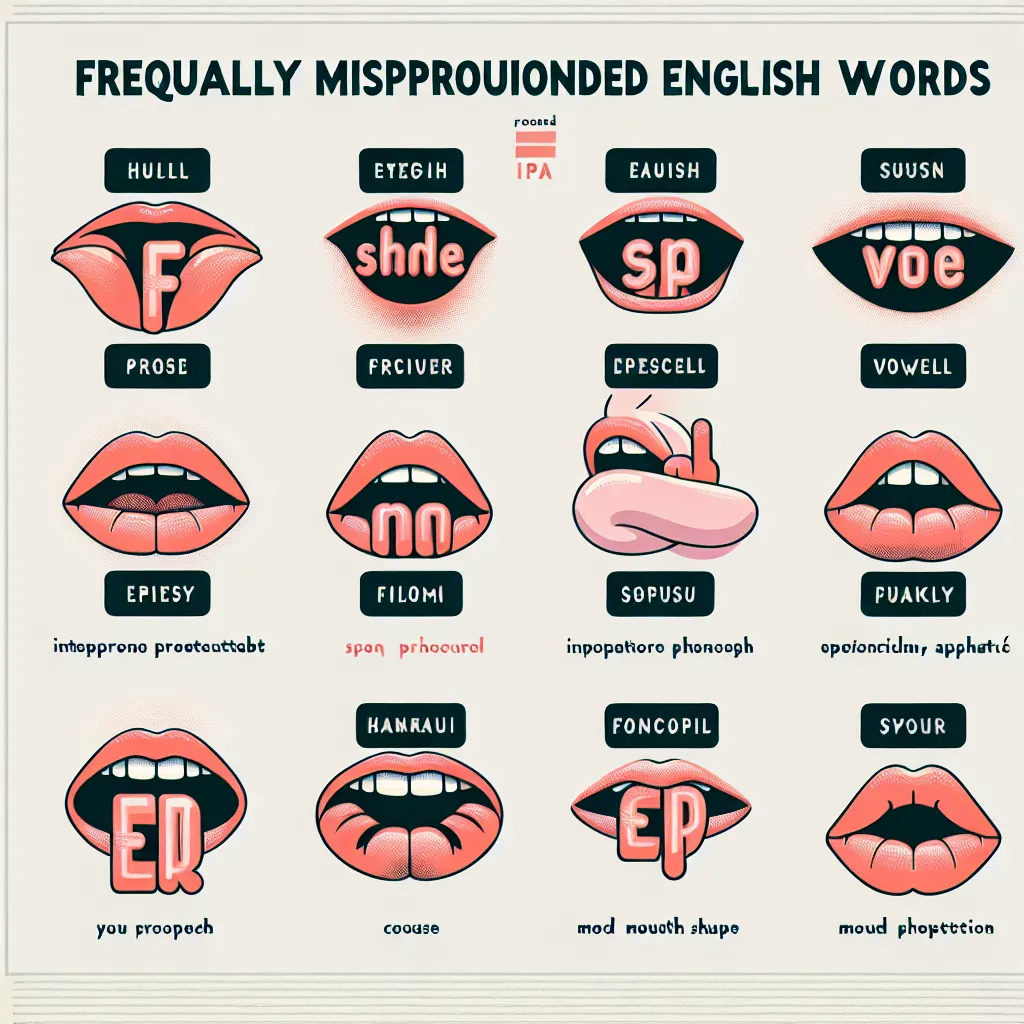Mastering the pronunciation of English words with vowel digraphs is a crucial step in achieving fluency and clarity in spoken English. Vowel digraphs, which are combinations of two vowels that represent a single sound, can be particularly challenging for non-native speakers. This guide will provide you with effective strategies and practical tips to improve your pronunciation of these tricky combinations.
 English vowel digraph pronunciation guide
English vowel digraph pronunciation guide
Understanding Vowel Digraphs
What Are Vowel Digraphs?
Vowel digraphs are two adjacent vowel letters that work together to produce a single vowel sound. For example, in the word “boat,” the “oa” is a vowel digraph that represents the long “o” sound. Understanding these combinations is essential for correct pronunciation in English.
Common Vowel Digraphs in English
Here are some of the most frequent vowel digraphs you’ll encounter:
- “ai” and “ay” (as in “rain” and “day”)
- “ea” (as in “beach” or “head”)
- “ee” (as in “meet”)
- “oa” and “ow” (as in “boat” and “low”)
- “oo” (as in “book” or “moon”)
- “ou” and “ow” (as in “house” and “cow”)
Strategies for Pronouncing Vowel Digraphs
1. Learn the Rules, but Be Aware of Exceptions
While there are general rules for pronouncing vowel digraphs, English is notorious for its exceptions. For instance:
- “ea” usually sounds like the long “e” in “beach,” but it can also sound like the short “e” in “head” or the long “a” in “great.”
- “oo” typically sounds like the “u” in “blue,” but it can also sound like the “u” in “book.”
2. Practice with Minimal Pairs
Minimal pairs are words that differ by only one sound. Practicing with these can help you distinguish between similar sounds:
- “beat” (long e) vs. “bit” (short i)
- “coat” (long o) vs. “caught” (aw sound)
- “fool” (long oo) vs. “full” (short oo)
3. Use the International Phonetic Alphabet (IPA)
The IPA provides a consistent way to represent sounds across languages. Learning the IPA symbols for vowel digraphs can greatly improve your pronunciation:
- /eɪ/ for “ai” and “ay” (as in “pain” and “say”)
- /iː/ for “ee” and some “ea” (as in “see” and “meat”)
- /əʊ/ or /oʊ/ for “oa” and some “ow” (as in “boat” and “show”)
4. Listen and Repeat with Native Speakers
Expose yourself to native pronunciations through podcasts, audiobooks, or language exchange partners. Pay close attention to how vowel digraphs are pronounced in different words and contexts.
Common Mistakes and How to Avoid Them
1. Overgeneralizing Rules
Mistake: Assuming all “ea” combinations are pronounced like “beach.”
Solution: Learn common exceptions and practice them individually.
2. Ignoring Regional Differences
Mistake: Not recognizing that pronunciations can vary between American, British, and other English varieties.
Solution: Be aware of these differences and choose a consistent accent to follow.
3. Neglecting Stress Patterns
Mistake: Focusing solely on the vowel digraph without considering word stress.
Solution: Practice whole words and sentences to internalize correct stress patterns.
Phonemic Chart and Commonly Mispronounced Words
Here’s a simplified phonemic chart focusing on vowel digraphs:
- /eɪ/: ai, ay (pain, day)
- /iː/: ee, ea (see, meat)
- /əʊ/ or /oʊ/: oa, ow (boat, low)
- /aʊ/: ou, ow (house, cow)
- /ɔɪ/: oi, oy (boy, coin)
Ten words often mispronounced due to vowel digraphs:
- Beautiful (/ˈbjuːtɪfəl/)
- Gauge (/ɡeɪdʒ/)
- Nauseous (/ˈnɔːʃəs/)
- Pronunciation (/prəˌnʌnsiˈeɪʃən/)
- Queue (/kjuː/)
- Thorough (/ˈθʌrə/)
- Thought (/θɔːt/)
- Through (/θruː/)
- Tough (/tʌf/)
- Weird (/wɪərd/)
 Commonly mispronounced English words with vowel digraphs
Commonly mispronounced English words with vowel digraphs
Conclusion
Mastering the pronunciation of English words with vowel digraphs takes time and practice. By understanding the basic rules, being aware of exceptions, and using tools like minimal pairs and the IPA, you can significantly improve your pronunciation. Remember to listen carefully to native speakers and practice regularly. With dedication, you’ll find yourself pronouncing these challenging combinations with greater ease and confidence.
We encourage you to share your experiences and any additional tips you may have in the comments below. Keep exploring our other articles on English pronunciation to further enhance your speaking skills!




